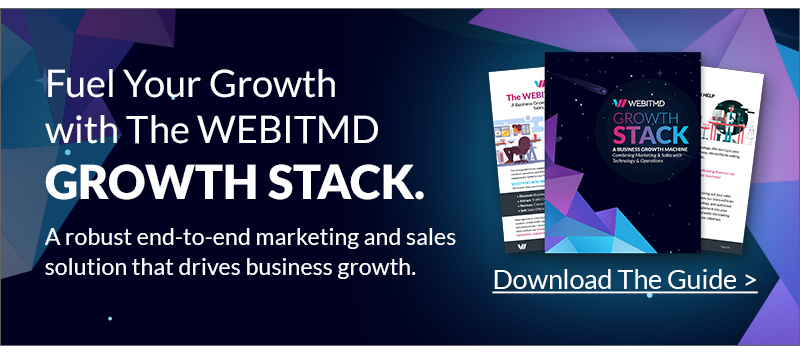The Inbound Marketing Methodology is all about doing business in an empathetic way, creating meaningful one-to-one relationships, educating your prospective customers, helping to solve their problems, and delighting them long-term. It’s about meeting people on their own terms, sharing your knowledge with them, and empowering them, instead of forcing them to engage with you. When you have the right information for the right people at the right time, it draws them in. And, if you’re offering a product or service that truly solves their problem, they’re happy to do business with you, developing an ongoing relationship that benefits everyone involved.
Traditional outbound marketing is more about blasting your sales pitch out to as many people as possible and persuading them to buy your product or service. This colder and more direct methodology may have been necessary at one time. But, with the dawn of the internet, the way people make purchases and do businesses is very different than it was just a few decades ago.
Less and less people are waiting passively to receive offers on TV, in their mailbox, or on billboards. More and more people today are going online and actively seeking out the solutions to their problems. They’re far less interested in the irrelevant ads they’re constantly being bombarded with and more interested in the content they’re seeking. Relevant articles, audio recordings, and videos are available at their fingertips. They find the information they need and then select the right products or services for them when it’s convenient for them.
As marketers and business owners in 2018, we have to adapt to this shift in customer behavior if we want to thrive. We need to serve the right content to the right person when they’re looking for it. When we do this, we create lasting relationships with clients, help to solve their problems, and form thriving businesses.
How Does Paid Media Fit Into The Picture?
Paid Media has an important role to play in this landscape. However, it’s not just about sending your offer to as many people as possible. Today, when creating advertisements online, we have to take into account who’s shown interest in our offer, and how to address their pain points in our communication. We can’t just use Facebook or Google Display Network to send out an image ad to men in the United States age 35 – 60 and expect them to show interest in a specific product or service. We have to be more granular. The best digital marketing agencies offering paid media target those who show interest in specific products or services, serve them ads when they’re looking for more information, and add value through their communication. This looks different across different ad platforms. But, running relevant Google Ad campaigns is a great example of how to do it.
If, for example, you ran a chiropractic clinic, you would want to connect with the people searching for “chiropractors near me” the moment they searched on the Google. Then, once they clicked your ad and visited your site, you would want to offer them valuable information about how chiropractic services can help to alleviate their pain and improve their health. In addition, you would want to offer them some type of high quality gated content in exchange for their contact information. Then, if they filled out a form, you could add them to an email workflow, educate them further over time, grow your relationship with them, and offer them your services if you were a good fit for each other.
Once they visited your site you could use Paid Media (Google Ads, Facebook Ads, Instagram Ads, etc.) to retarget them and educate them further. You could encourage them to download your gated content if they didn’t when they first visited your site. You could add additional touch points on other platforms to reiterate educational points from your email workflow if they did fill out a form. And you could use Paid Media to encourage them to book an appointment with you once you offered them your educational content. And then, once they became an established client, you could use Paid Media (and email marketing) to retarget them and encourage them to give you feedback on their experience, refer a friend, or attend special event. Just make sure your paid media ads aren’t being shown to random people in order to get the best results. There are numerous ways to use Paid Media to connect with and add value to your clients throughout your entire relationship with them, not only when they initially search for your type of product or service. And, if you’re consistently adding value through your communication, they will gradually come to know, like, and trust you.
Paid Media is a Vital Piece to the Inbound Marketing Puzzle
To recap, buyer behavior is shifting as information technology evolves. Outbound marketing is growing less effective. The Inbound Marketing methodology can be used to serve people when they’re seeking solutions, answer their questions, educate them, build trust, and do business in a more empathetic and long-lasting way. Paid Media can be used as a tool within this framework to form an initial connection with prospects and nourish client relationships long-term through advanced remarketing strategies. This can compliment email workflows and add additional touch points to help keep your brand top of mind. There are many elements to effective Inbound marketing. But, if used correctly, Paid Media can be an invaluable piece of the puzzle.
Feel Empowered to Run Paid Media and Inbound Marketing Together?
If this article left you feeling inspired to run these two strategies with the goal to hit your revenue targets, you will love learning about our custom Growth Stack. Learn how additional tools and strategies can be added to the paid media and inbound pieces to help you hit your growth goals. Download the FREE guide below, see if this makes sense for your business, and give us a call with any questions!


(1).jpg)




.jpg)



.jpg)





![5 Reports to Elevate Your HubSpot Sales Dashboard [+ Examples]](https://blog.webitmd.com/hs-fs/hubfs/Imported_Blog_Media/6-winning-examples-of-a-hubspot-sales-dashboard-2.png?width=767&name=6-winning-examples-of-a-hubspot-sales-dashboard-2.png)